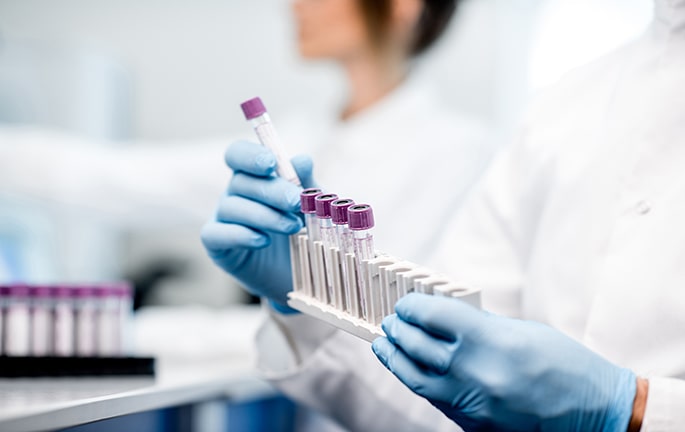Radiopharmacy
Resolve your doubts about radiopharmacy and the most commonly used therapeutic radiopharmaceuticals. We explain what this specialty is, the most commonly used techniques, and the different types of radiopharmaceuticals available.

What is Radiopharmacy?
Radiopharmacy specializes in the knowledge of the chemical, biological, and physical characteristics of radiopharmaceuticals and uses its discoveries to design, produce, and administer them. These drugs consist of a biological molecule and an isotope, which is a radioactive element, and can be used to aid in diagnosis or for therapeutic purposes.
In most cases, radiopharmaceuticals are administered to perform positron emission tomography (PET) scans, as the radioactive substance easily helps detect tumors.
What does Radiopharmacy study and treat?
The study of radiopharmacy can focus on research or the production and administration of medications intended for medical assistance. One of the main objectives of this specialty is to ensure the proper use of radiopharmaceuticals and establish the necessary precautions to guarantee patient safety. Due to the special nature of these drugs, specialists must also understand the legal aspects that regulate their administration and handling.
Pharmacists focus on the study of two types of radiopharmaceuticals:
- Diagnostic Radiopharmaceuticals: This is their most common use, as they serve as a contrast medium to obtain non-invasive images of internal organs. When cancerous cells, which have high activity, adhere to radioactive atoms, special cameras detect the radioactivity. One of the major advantages of this method is that tumors are discovered at the molecular level, before they are anatomically visible, allowing for early diagnosis.
- Therapeutic Radiopharmaceuticals: In recent years, therapies based on the use of radiopharmaceuticals have started to be developed, as they cause less damage to healthy cells. These more personalized and less toxic treatments are currently one of the main lines of research in this specialty.
Techniques, Procedures, and Diagnostic Methods
Technological development has greatly assisted research in radiopharmacy, which faces significant challenges for the future, such as improving treatments with radiopharmaceuticals. However, the day-to-day tasks of most pharmacists working in nuclear medicine units focus on preparing medications. To do this, they use various techniques, including:
- Labeling of reactive agents: Procedures carried out to obtain radiopharmaceuticals by following the necessary specifications for them to fulfill their function. This process requires mixing a radionuclide with a monoclonal antibody, and then tracking the reactive processes that are triggered.
- Labeling with 99mTc: Used to manufacture technetium radiopharmaceuticals.
- Labeling with 111In: Used to produce indium radiopharmaceuticals.
- Labeling with 90Y: Used to produce yttrium radiopharmaceuticals.
- Cell labeling: Cells from the patient’s own body are labeled, so specific sterility conditions must be met, and the procedure must be very precise. Platelets, leukocytes, or red blood cells can be marked to determine platelet kinetics and distribution, detect infectious or inflammatory processes, and locate hemorrhages, respectively.










